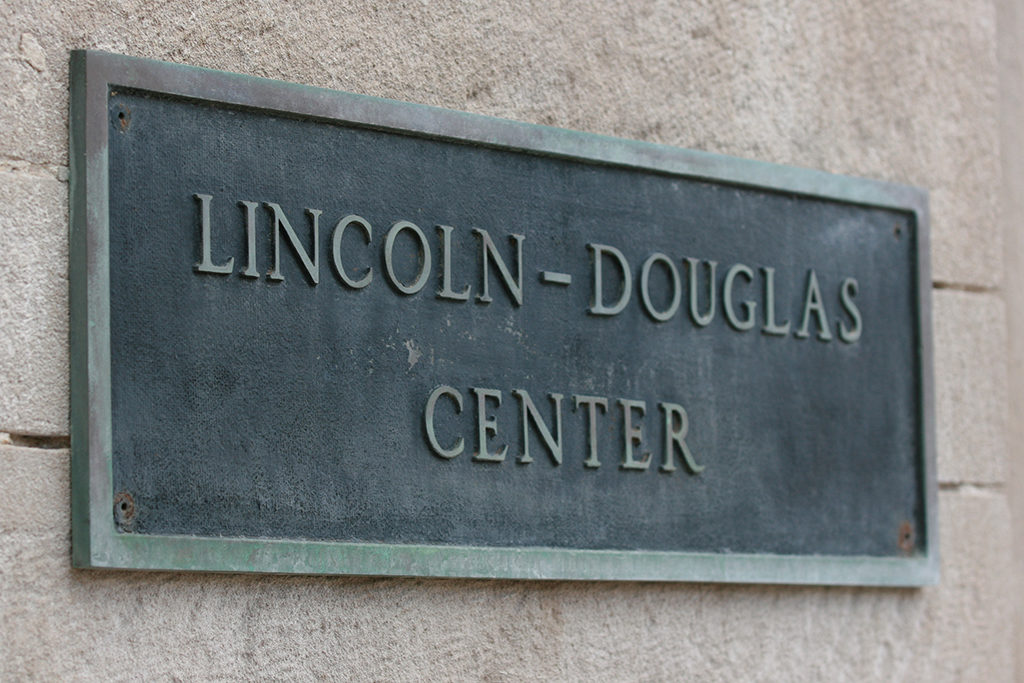
3.7.81
Freeport Journal Standard
by Duncan Birdsell
Downtown Landmark Preserved by Restoration
Firmly fashioned buildings of yester-year with their treasured craftsmanship deserve rebirth.
Witness the Lincoln-Douglas Center, the stately stone base and colonnaded office building on North Galena Avenue facing the courthouse.
Fully renovated, yet preserving the same imposing presence as when it was erected in 1896, the building fulfills the vision of three young Freeport attorneys.
Robert Plager, Duane Hasting and Lyle Krug purchased the faltering structure in November 1979. Two choices immediately faced them–demolish the downtown landmark and erect a utilitarian two-story office building to free their cramped law practice, or renovate and modernize.
“We found the cost to tear down and put up a new 5,000-square-foot building would be as much as redoing, so we sure didn’t want to do it,” Plager reflects.
Hasting observes, “There are no second thoughts, we made the right decision. We’ve received an awful lot of good comments from people in the community, not only in saving the building from destruction but in restoring it and improving it’s looks.”
“The rehabilitation exceeded my expectations,” says Krug. “It was a viable structure and had tremendous potential. I feel very good about it.”
A weather break, many planning sessions and dedicated work by contractors brought success, so past early architectural charms blend with today’s essential building conveniences.
“When we got the building, the roof was shot. There was water damage down to the first floor. The building was close to being torn down in another year,” Plager said. “But we had a warm fall and Bennett & Hoefer got a new roof on before the cold weather set in.”
To develop the renovation concept, the three law partners gathered every morning at 7 a.m., spent two hours on planning and then turned to the day’s law practice. Invaluable architect Paul Young & Associates of Bloomington executed the design.
Renovation commenced after Memorial Day 1980, with Faulkner Builders of Forreston the general contractor. A full summer and fall of work followed. The Freeport Area Chamber of Commerce and Specialized Business Systems Co. became ground floor tenants last fall and the law partnership moved into offices occupying the whole third floor in November.
An all-out project marked the restoration. The facade was sandblasted and tuckpointed, original entry lights restored and ground level lighting installed to accent the facade. A new sidewalk and tree plantings offer freshness.
The distinctive window designs were retained, but energy efficient panes replaced the existing ones. New heating, plumbing, and electrical systems were installed. We figured we’d just bought a shell,” Plager explained.
Strolling through the building today reveals the rebirth and enrichment of the old.
The downstairs lobby has been restored to reflect the original 1896 design.
“It was really ugly before the woodwork was painted gray and not very pretty, there were exposed sprinklers, upright radiators and an old fluorescent light were hanging there,” Plager recalls.
Gone now are the radiators, a period-piece chandelier gives illumination and the mahogany woodworking with delicate hand carved trim shines again in original luster, thanks to the perseverance of two Forreston women hired by Louis Faulkner.
The lobby’s marble walls provide dignity. Mounting the front stairs of original marble and exquisite iron railings conveys the timeless feeling.
Oak door molding salvaged and renewed from various points in the building accent stairwell doors on each floor and the elevator doors. Inside the remodeled elevator, oak beams mask the stark aluminum hand rails.
Presently the second floor remains unoccupied and open to needs of future tenants.
Subtle elegance encompasses the top floor law office, where the oak wood flavor offers warmth.
Plank oak flooring graces the third-floor hallway and law office reception area. Clients approach a 10-foot-long reception counter fashioned of oak by Phil Tormohlen, who also built two oak typing stands and tables for the offices.
A stunning vaulted oak beam ceiling in the spacious central work area complements the cathedral plank oak flooring. Secretaries work at oak desks and built-in oak bookshelves line the walls.
Along the perimeter are situated the paralegal room, private offices for the attorneys and a conference room overlooking the new courthouse.
Treasures from the old courthouse lend unparalleled distinction to the conference room. Two arched doors of solid walnut with hand carved oak and mahogany trim flank the window, restored to earlier charm by antique craftsman Butch Broughton.
Occasional surprises accompanied the renovation.
Tearing out unwanted third-floor walls exposed intriguing, fluted cast iron columns.
An ancient safe was discovered in a third-floor vault.
“It must have been unused for years,” Plager noted. “Before pushing it out, we had Spinello of Rockford come over and open it. Now we’re using it for valuable records. Safes last forever, so maybe it’s good for 100 years.”
The two distinguished photographic reproductions of President Abraham Lincoln and Sen. Stephen A. Douglas in the first-floor lobby arrived after an inquiry in Springfield.
“I noticed similar pictures hanging in the Carroll County Courthouse,” Plager said. “When Charles Carpentier was Secretary of State he had reproductions sent to various courthouses.
“I found they were done by the Herbert George Studio in Springfield. I called down and was able to find the widow of the proprietor. She still had the negatives and could arrange for the prints.”
To Plager the “new-old” Lincoln-Douglas Center offers testimony for restoration.
“You get so much character and end up with something different. We all had feared at first, but we warmed up. This became part of us. I’d encourage others to look seriously at it.
